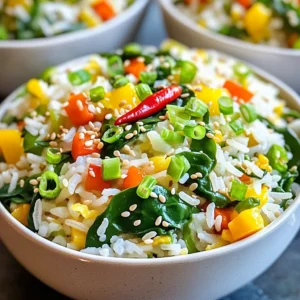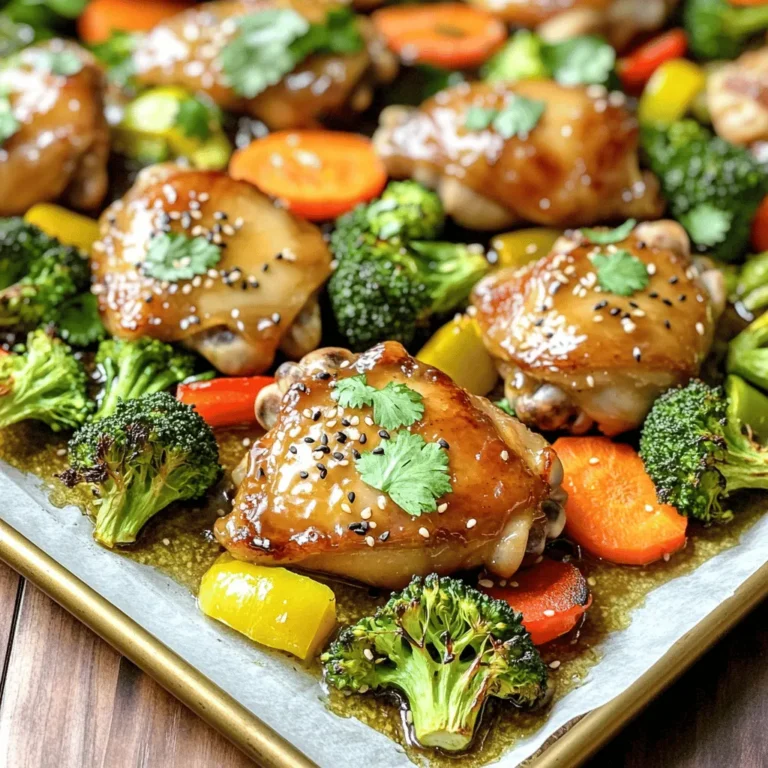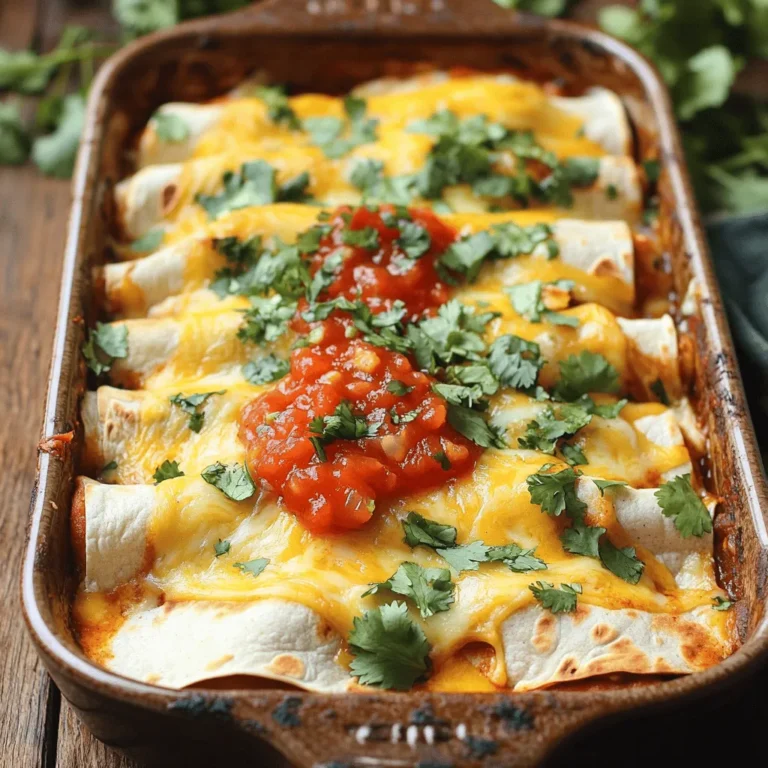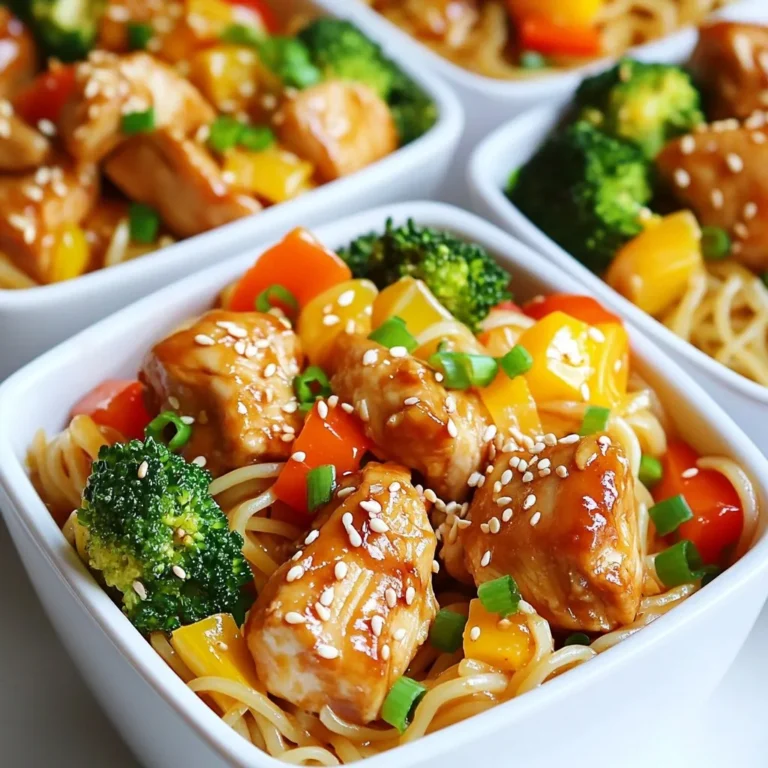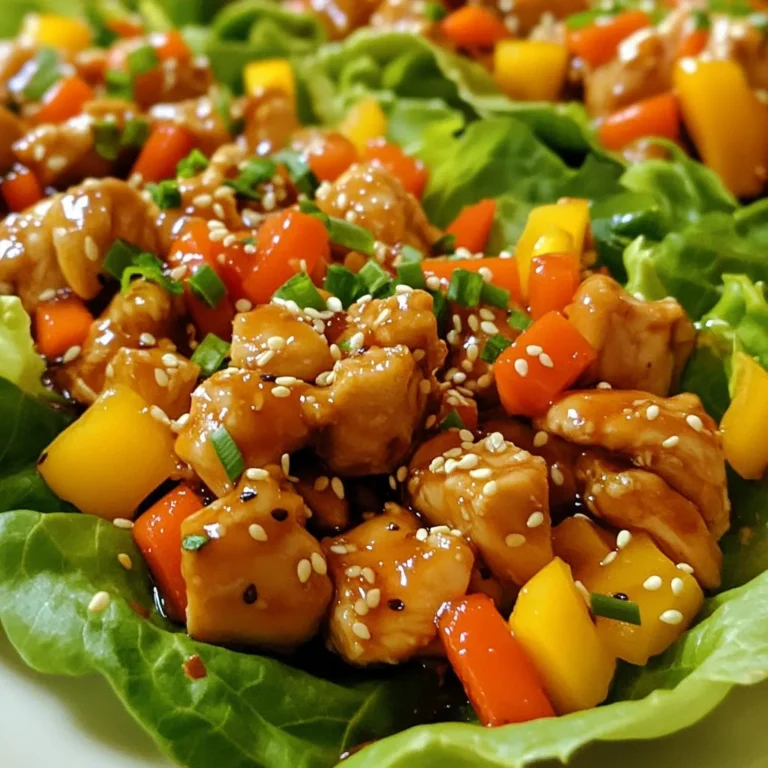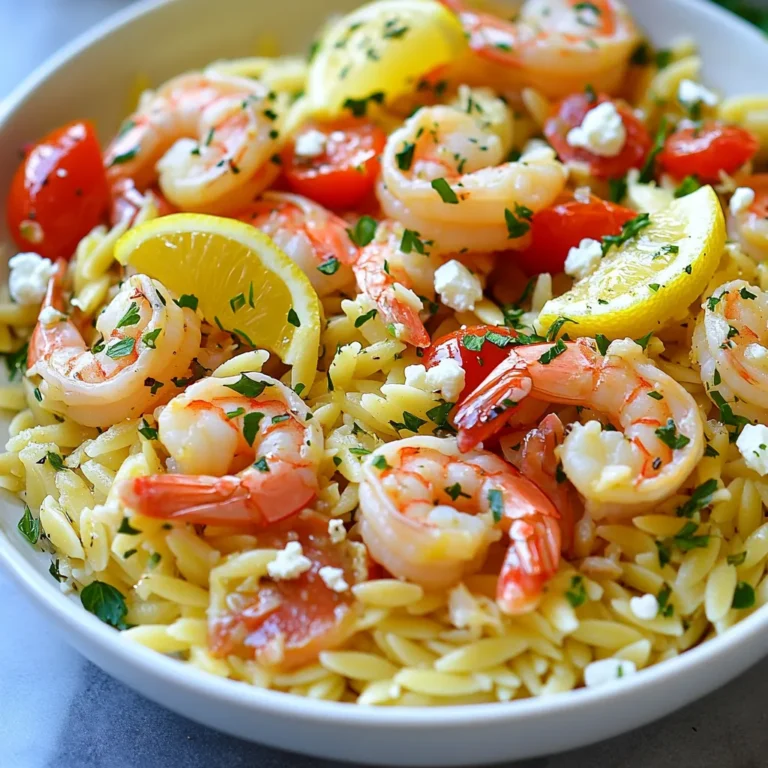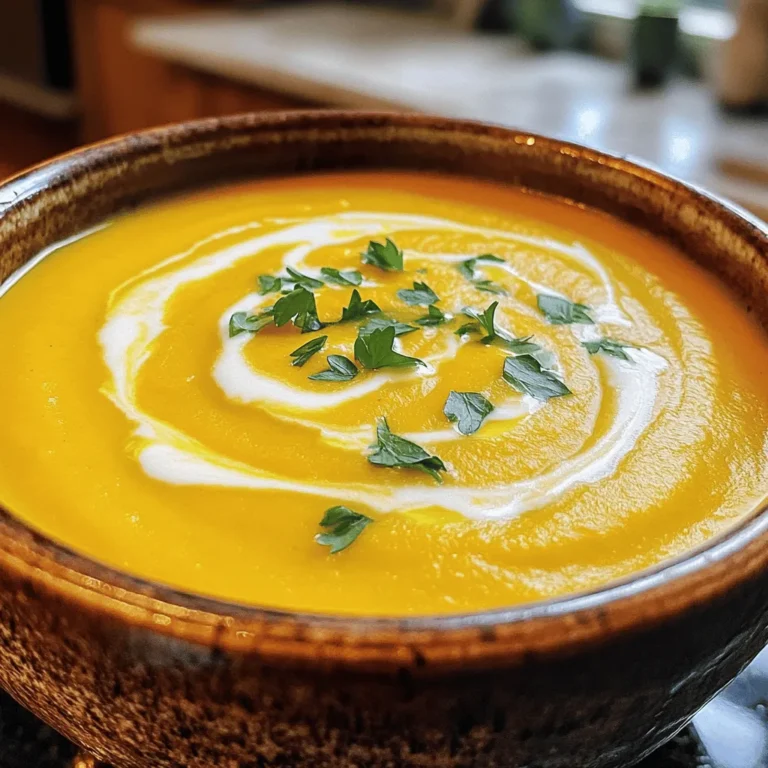Minute Garlic Chili Rice Bowls Flavorful Quick Meal
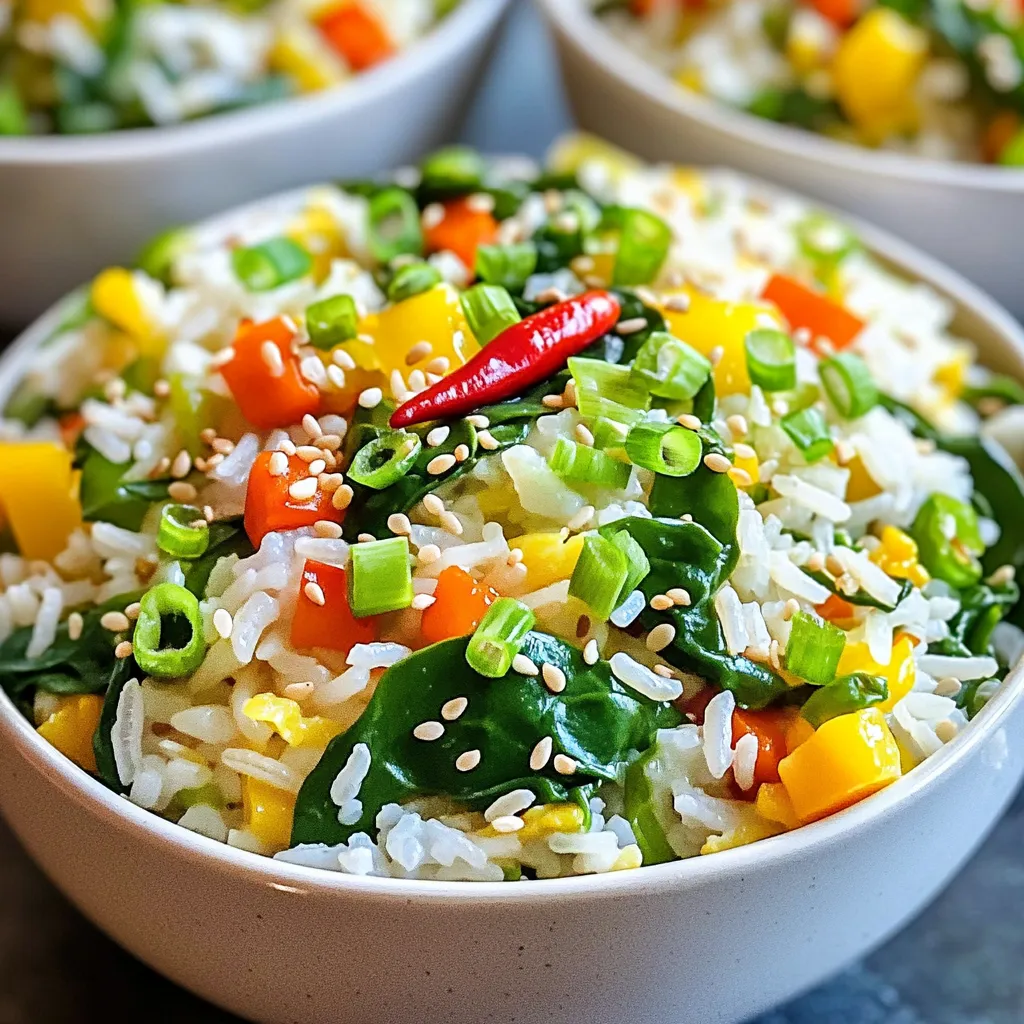
Looking for a quick and tasty meal? You’re in the right place! My Minute Garlic Chili Rice Bowls pack bold flavor and fresh veggies into just one bowl. With easy steps and simple ingredients, you can enjoy a delicious dinner in minutes. Whether you crave spicy heat or a veggie-filled delight, this dish has you covered. Let’s dive into how to make this fast and flavorful meal!
Ingredients
List of Ingredients
– 2 cups cooked jasmine rice
– 4 cloves of garlic, finely minced
– 1 red chili, finely chopped
– 3 tablespoons soy sauce
– 1 tablespoon sesame oil
– 1 tablespoon olive oil
– 1 cup baby spinach
– 1 cup mixed vegetables
– 1 green onion, thinly sliced
– Sesame seeds
– Salt and pepper to taste
Gathering the right ingredients makes this dish easy and fun. I love using jasmine rice for its light and fluffy texture. The garlic and chili add a great kick. Feel free to adjust the chili to suit your spice level.
The soy sauce and sesame oil bring rich flavors that blend well. Baby spinach is my go-to leafy green, but you can choose any you like. Mixed vegetables add color and crunch. I use a mix of carrots, peas, and bell peppers for the best taste.
Don’t forget to garnish with sliced green onions and sesame seeds. They add a nice touch and boost the dish’s look. Remember, season with salt and pepper to match your taste. This simple list of ingredients ensures you can whip up a delicious meal in no time!
Step-by-Step Instructions
Preparation Steps Overview
– Cooking jasmine rice: Start with 2 cups of jasmine rice. Cook it according to package instructions. Fluff it once done and set aside.
– Chopping vegetables: Chop your mixed vegetables like carrots, peas, and bell peppers. This adds color and flavor.
– Mince garlic and chili: Finely mince 4 cloves of garlic and 1 red chili. Adjust the chili based on your heat preference.
Detailed Instructions
– Heat the oils and sauté garlic and chili: In a large skillet, pour in 1 tablespoon of olive oil and heat it over medium heat. Add the minced garlic and chopped chili. Sauté for about 1 minute. Stir constantly until fragrant. Be careful not to let the garlic burn.
– Sauté mixed vegetables and wilt spinach: Add the mixed vegetables to the skillet. Stir them for 3-4 minutes until they soften. Then, add 1 cup of baby spinach. Cook for another minute until it wilts down.
– Incorporate jasmine rice and season: Add the cooked jasmine rice to the skillet. Gently break up any clumps with a spatula. Mix well with the sautéed veggies. Drizzle 3 tablespoons of soy sauce and 1 tablespoon of sesame oil over the rice. Stir everything to blend flavors. Season with salt and pepper to taste.
Final Touches
– Crisp the rice mixture: Let the rice cook for an extra 2-3 minutes without stirring. This helps form a crispy layer on the bottom if you want that texture.
– Serve and garnish: Remove the skillet from heat. Transfer the rice to serving plates. Garnish with sliced green onions and a sprinkle of sesame seeds. Enjoy your vibrant, flavorful meal!
Tips & Tricks
Cooking Tips
To get crispy rice, let it cook without stirring. After mixing in the rice, press it down. Cook for 2-3 minutes. This will let it stick to the pan, creating a nice crust.
To adjust the spice level, choose your chili wisely. Use a mild chili for less heat. If you want more spice, add another chili or some chili flakes. Taste as you go.
Ingredient Tips
For soy sauce, you can use tamari or coconut aminos. Both give similar flavors. For sesame oil, try using olive oil or peanut oil. They can add a nice touch too.
When picking vegetables, focus on freshness. Use bright, crisp veggies. Carrots, peas, and bell peppers work great. You can mix in any veggies you like. Just ensure they are fresh and colorful.
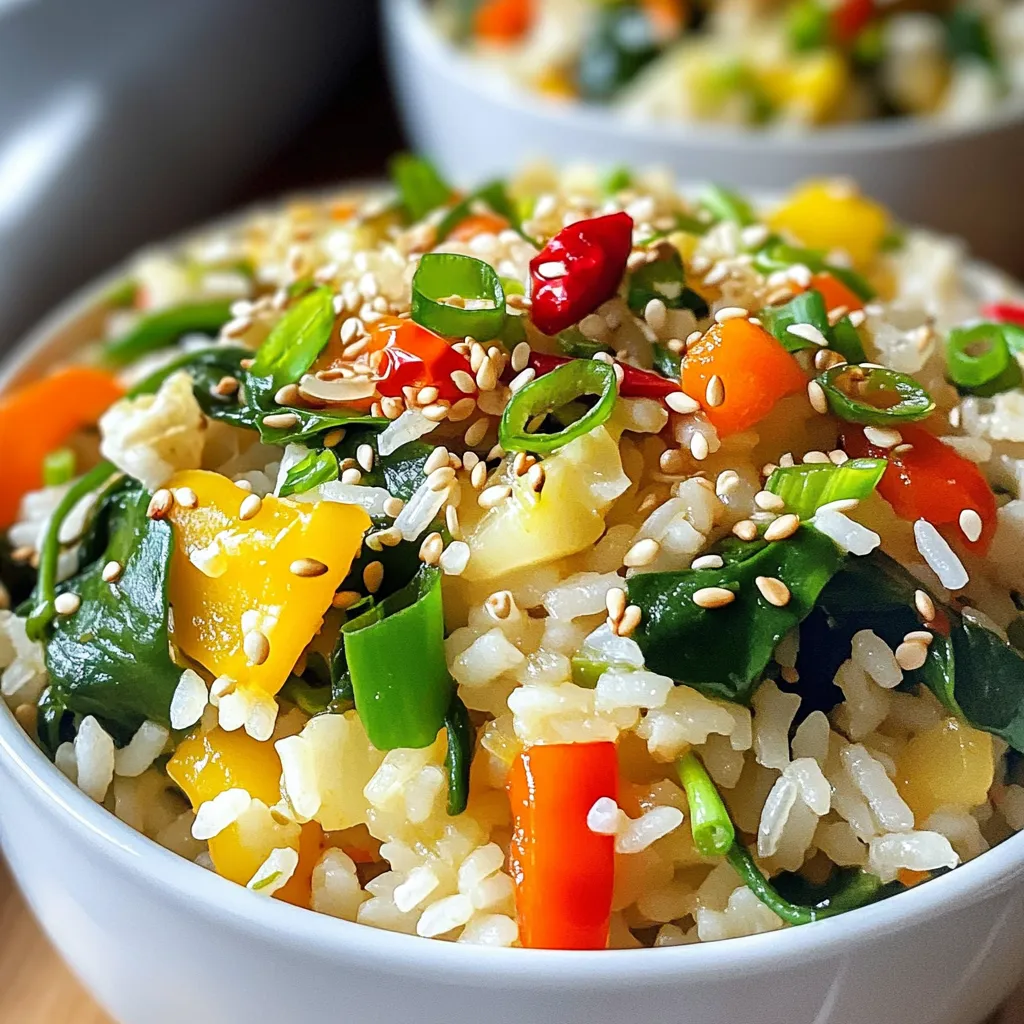
Variations
Vegetarian and Vegan Options
You can easily make this dish vegetarian or vegan. Instead of using meat, swap it for tofu or tempeh. Both options soak up flavors well and add protein.
– For tofu: Press it for 30 minutes to remove water, then cut it into cubes.
– For tempeh: Slice it thin and sauté for a few minutes.
Add either option to the skillet after you cook the garlic and chili. This gives them time to absorb the savory taste.
Flavor Variations
Want to spice things up? You can change the flavor profile with a few simple additions.
– Add ginger: Grate a small piece and sauté it with garlic for warmth.
– Citrus zest: Use lemon or lime zest for a bright touch.
You can also change the type of rice. Jasmine rice is great, but brown rice or basmati can add a nutty flavor. Just make sure to adjust cooking time as needed.
Accompaniments
Pair your rice bowl with a few side dishes.
– A simple cucumber salad adds crunch and coolness.
– Steamed broccoli or snap peas provide more greens.
These sides enhance your meal while keeping it light and fresh. Enjoy exploring these variations for your Minute Garlic Chili Rice Bowls!
Storage Info
Storing Leftovers
To keep your Minute Garlic Chili Rice Bowls fresh, store them in an airtight container. This helps seal in the flavors and moisture. You can refrigerate leftovers for up to three days. If you want to keep them longer, freeze the rice bowls for up to one month. Make sure to separate the rice and veggies if you prefer. This keeps textures better when reheating.
Reheating Guidelines
When it’s time to enjoy leftovers, follow these simple steps for reheating. If you use a microwave, place the rice in a microwave-safe bowl. Add a splash of water to keep it moist. Cover the bowl with a damp paper towel or lid. Heat it for 1-2 minutes, stirring halfway through.
If you prefer a skillet, heat a tiny bit of oil over medium heat. Add the rice mix and stir. Cook for about 5 minutes, stirring often, until heated through. This method helps retain the nice texture and flavor. Enjoy your meal just as tasty as the first time!
FAQs
Can I use other types of rice?
Yes, you can use other types of rice. Brown rice, basmati rice, or even quinoa work well. Just adjust the cooking time as needed. Each type of rice adds a unique taste and texture.
How can I make it gluten-free?
To make this dish gluten-free, use tamari instead of soy sauce. Tamari is a gluten-free soy sauce. Check your sesame oil for gluten, too, as some brands may include it.
What can I substitute for garlic if allergic?
If you are allergic to garlic, try using shallots or green onions for flavor. You can also use garlic-infused oil for a hint of garlic taste without the actual cloves.
Is this dish suitable for meal prep?
Yes, this dish is perfect for meal prep! Cook a large batch and store it in airtight containers. It keeps well in the fridge for about 3-4 days. Just reheat it when you are ready to eat.
This blog post gave you a clear recipe for a tasty rice dish. We covered ingredients, step-by-step cooking methods, and helpful tips. You learned how to make this dish crispy, spicy, and easy to customize. Plus, you got insights on storage and reheating. Now you can enjoy delicious meals any day. Try different flavors or vegetables to make it yours. Remember, cooking is fun, so feel free to experiment!
